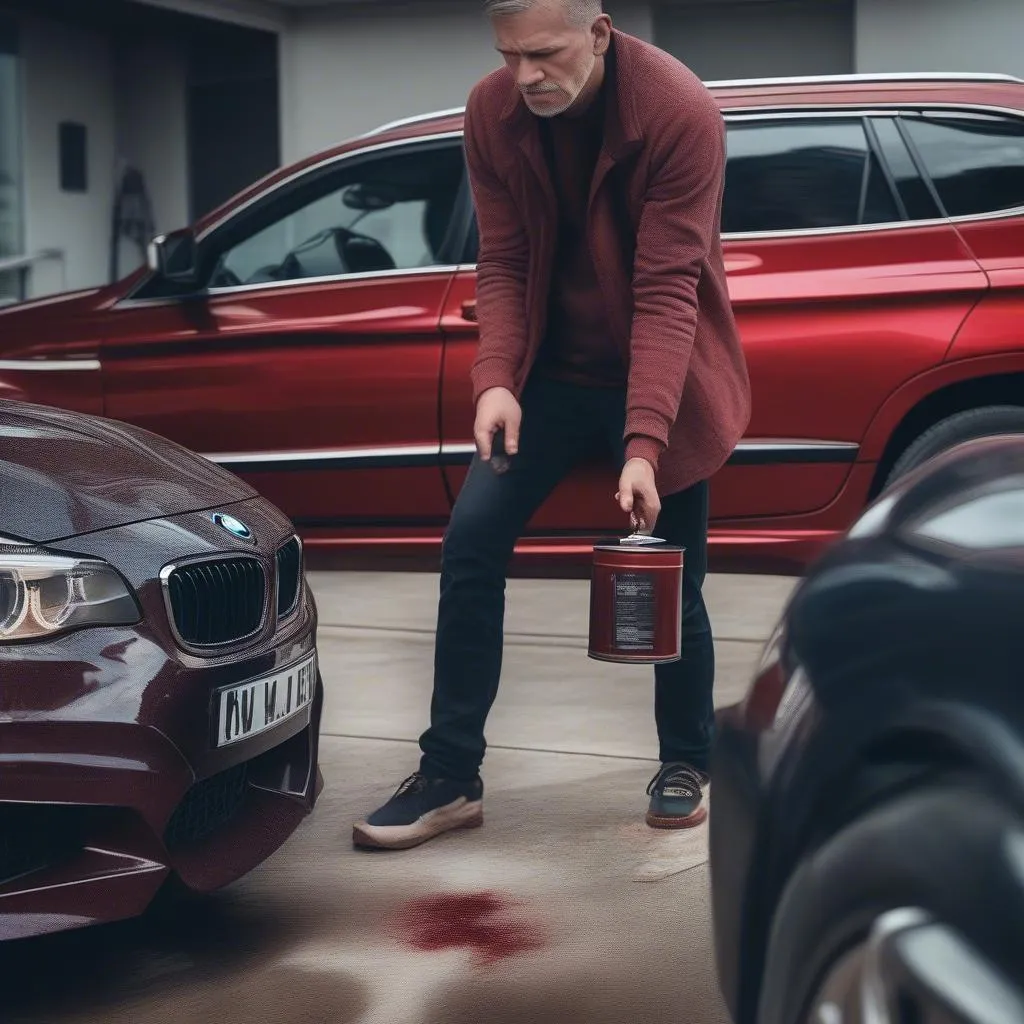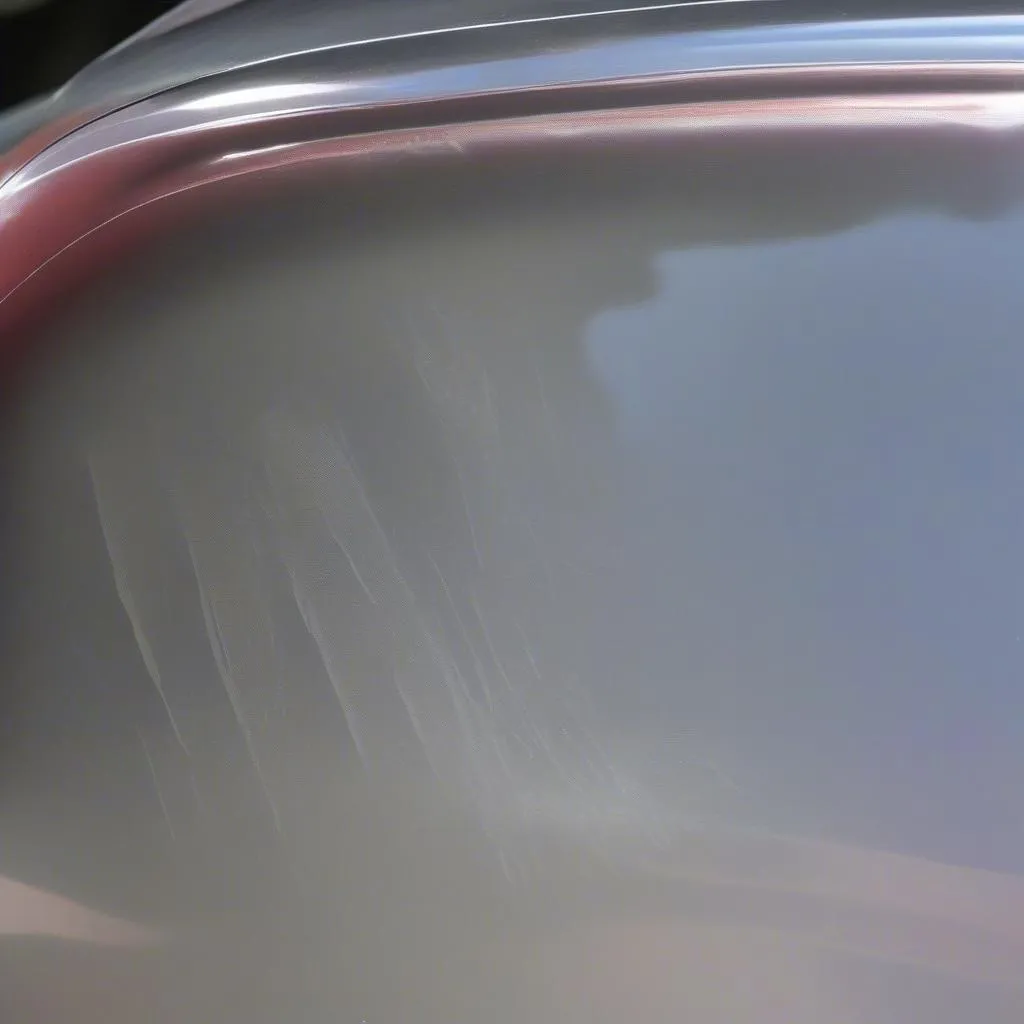Have you ever wondered if using brake cleaner on your car paint is safe? It’s a common question, and one that many car owners have asked themselves. I remember once, when I was a young mechanic, I saw a seasoned mechanic use brake cleaner to clean some grease off the undercarriage of a customer’s car. The customer, a nervous young woman, looked terrified! She asked, “Is that going to ruin my paint?” The mechanic chuckled and said, “Nope, just don’t spray it directly on the paint!” But is that really true? Let’s delve deeper into this question and explore the potential risks and precautions you should take.
Understanding the Risks
Brake cleaner, as the name implies, is a powerful solvent designed to remove grease, oil, and brake fluid from brake components. It is often formulated with harsh chemicals that can strip away layers of paint if used improperly.
From a Car Mechanic’s Perspective:
As a professional mechanic, I have seen firsthand the potential damage that brake cleaner can cause to car paint. The harsh chemicals can dull the paint, cause discoloration, or even etch the surface, leading to irreversible damage.
From a Technical Perspective:
Most brake cleaners contain acetone, methyl ethyl ketone (MEK), or other strong solvents. These chemicals are highly effective at removing grease and grime, but they can also damage the paint’s clear coat and even the base layers. Imagine it as a paint thinner – it’s designed to break down paint.
From a Cost Perspective:
Replacing a damaged paint job can be costly, often exceeding $1,000 in labor and materials depending on the extent of the damage and your location.
How to Use Brake Cleaner Safely
So, how can you avoid damaging your car’s paint when using brake cleaner? Here’s what you need to do:
1. Always Test in a Hidden Area:
Before using brake cleaner on your car’s paint, always test it in a hidden area. This could be a small spot under the car, behind a wheel well, or even on a spare panel.
2. Spray a Small Amount and Wipe Immediately:
If you must use brake cleaner on your car’s paint, spray a small amount and wipe it away immediately. Do not let it sit for too long. Avoid saturating the area.
3. Use a Microfiber Cloth:
When wiping away brake cleaner, use a microfiber cloth to prevent scratching.
4. Rinse with Water:
After wiping away the brake cleaner, rinse the area with clean water to remove any remaining residue.
5. Consider Alternatives:
If you are worried about damaging your car’s paint, there are alternatives to brake cleaner. Water and a mild soap are often sufficient for cleaning grease and grime. For more stubborn stains, you can try a citrus-based cleaner or a cleaner specifically designed for car interiors.
6. Consult a Professional:
If you are unsure about using brake cleaner, consult a professional auto detailer or mechanic.
Frequently Asked Questions
Can brake cleaner cause paint to fade?
Yes, brake cleaner can cause paint to fade if it is left on for too long or if it is applied in a heavy amount. The chemicals in brake cleaner can strip away the protective layers of paint, leaving the underlying layers vulnerable to sun damage and fading.
Can brake cleaner be used to clean car interiors?
No, brake cleaner should never be used to clean car interiors. It is a powerful chemical that can damage upholstery, vinyl, and plastic.
What are the best alternatives to brake cleaner for cleaning car parts?
Some good alternatives to brake cleaner include:
- Water and mild soap: This is often sufficient for cleaning grease and grime from car parts.
- Citrus-based cleaner: These cleaners are effective at removing grease and grime without being as harsh as brake cleaner.
- Cleaner designed for car interiors: These cleaners are safe for use on upholstery, vinyl, and plastic.
Can brake cleaner be used to clean car windows?
No, brake cleaner should never be used to clean car windows. It can damage the window tint and leave streaks on the glass.
In Conclusion
Brake cleaner is a powerful solvent that can be helpful for cleaning greasy parts of your car, but it’s important to use it with caution. Using brake cleaner on your car’s paint can damage the paint and leave it dull, faded, or even etched. Always test in a hidden area and avoid using it directly on your car’s paint. If you need to use brake cleaner, use a small amount, wipe it away immediately, and rinse the area with water. Alternatives to brake cleaner are often available, so consider using them instead if you are worried about damaging your car’s paint. If you’re ever unsure, it’s always best to consult a professional.
 Brake Cleaner On Car Paint" width="1024" height="1024">Brake Cleaner on Car Paint
Brake Cleaner On Car Paint" width="1024" height="1024">Brake Cleaner on Car Paint
 Car Paint Damage
Car Paint Damage
 Professional Mechanic
Professional Mechanic
Let me know if you have any questions or if you would like to know more about using brake cleaner safely. If you need help with any other automotive issues, feel free to reach out to our team of experts. We’re here to help!